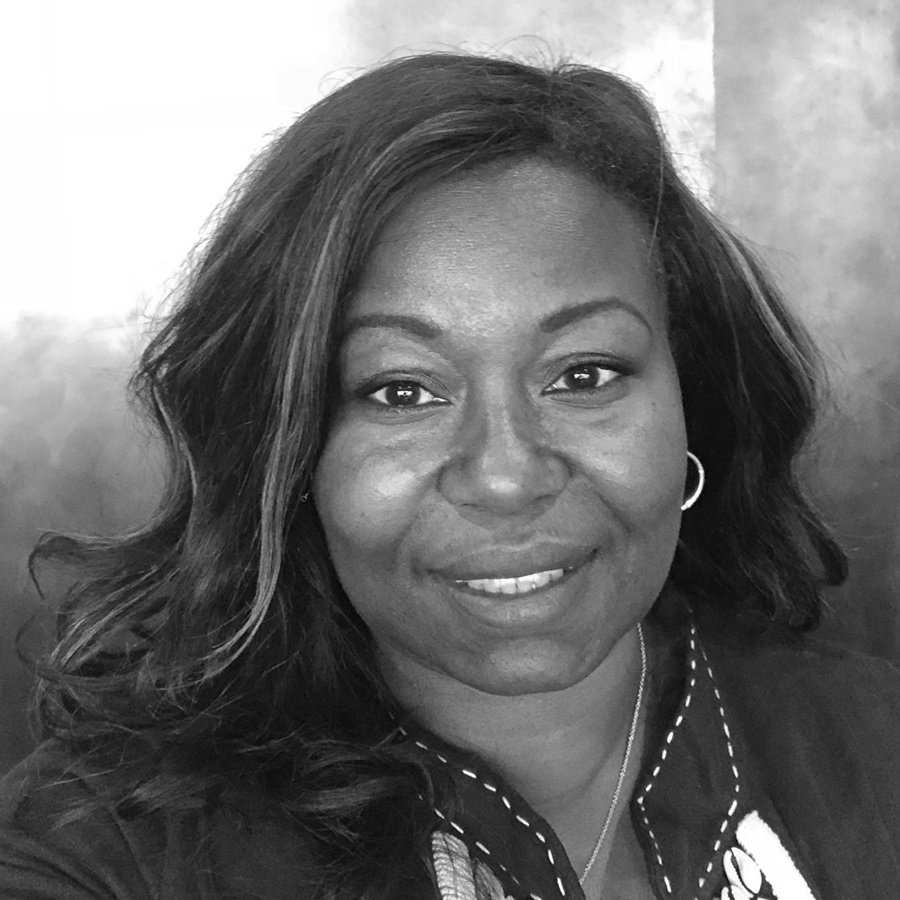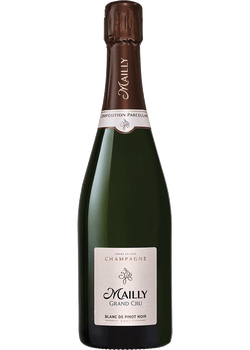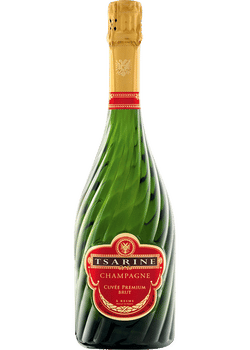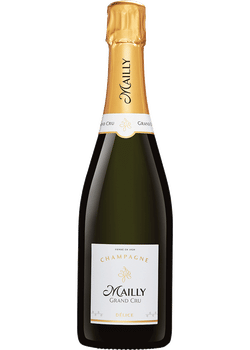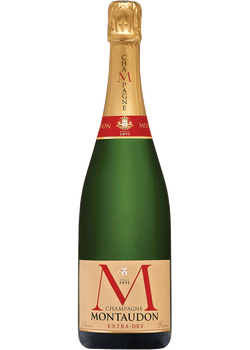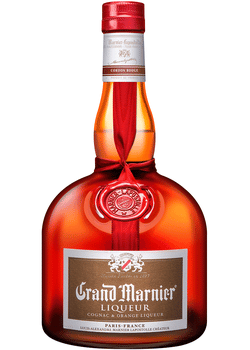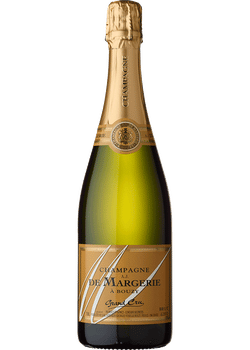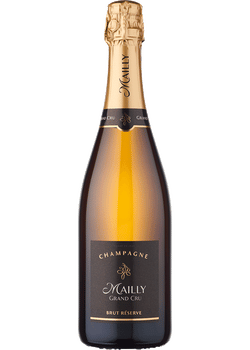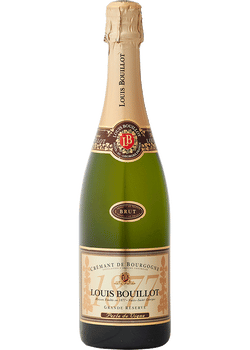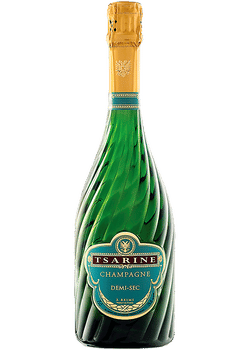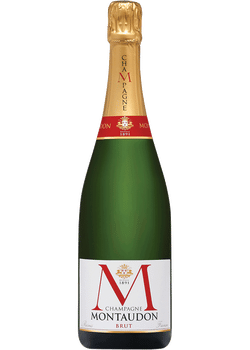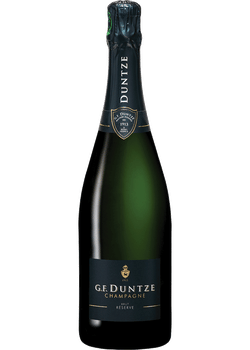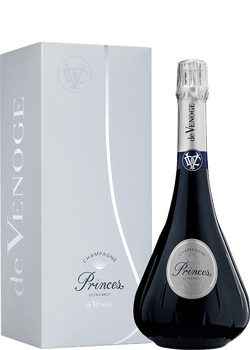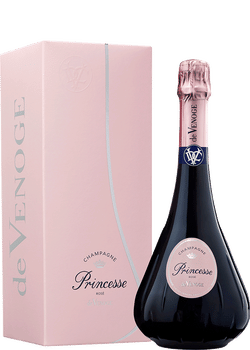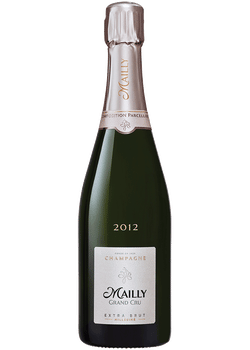Is there any wine that uncorks more happiness and emotion than Champagne? Just look at all the songs and memorable quotes this delightfully effervescent French wine has inspired over the decades. Since the 1600s, winemakers have artfully created this joyous wine infused with CO2. As much as we love sipping a cold flute of Champagne, it shines paired with foods from sushi to French fries to steak. As you explore Champagne in different sweetness levels and styles, from Rosé to Blanc de Blanc to Blanc de Noirs, you’ll find the perfect Champagne for you.
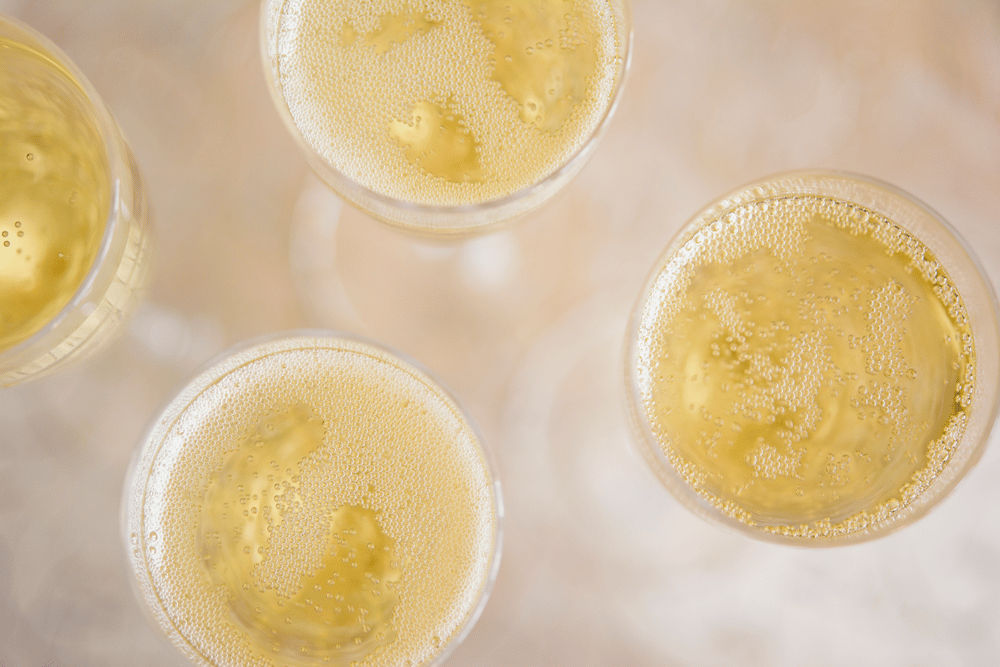
Champagne facts
- Only sparkling wine from the Champagne region of France is Champagne. Everything else is sparkling wine.
- There are an estimated 49 million bubbles inside a bottle of Champagne.
- The three main grapes in Champagne are Pinot Noir, Chardonnay, and Pinot Meunier (mun-YAY). By law Champagnes also can include Arbane, Pinot Blanc, Fromenteau (aka Pinot Gris), and Petit Meslier grapes.
- Rosé Champagne was invented by a young woman named Barbe-Nicole Ponsardin Clicquot, better known as the Veuve Clicquot.
- The creation of the first brut Champagne in 1874 by Jeanne Alexandrine Louise Pommery, also known as Madame Pommery or Veuve Pommery.
- The original Champagnes were very sweet, which is called doux. Over the years, they became less and less sweet or dry until brut Champagne became the most prevalent style.
Color
Tasting Profile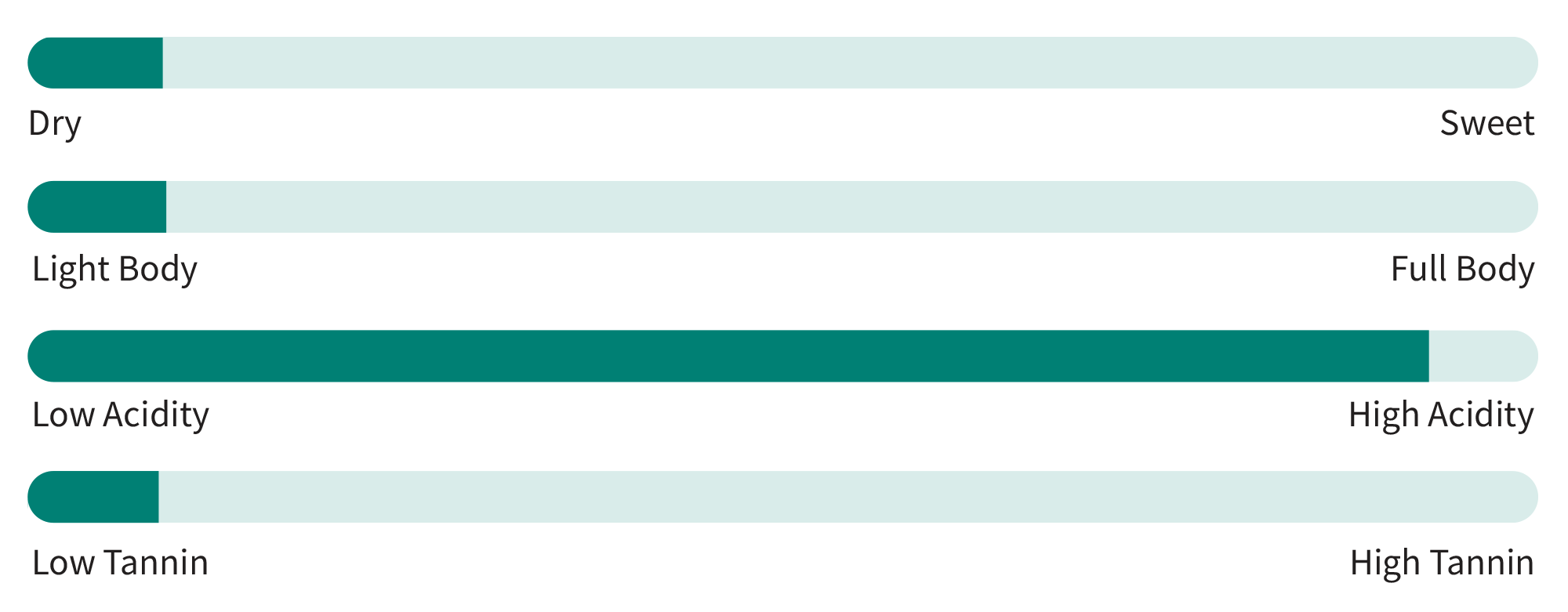
Primary flavors
Key regions
Champagne only comes from the Champagne region of France, which is about 90 minutes from Paris. Most of the famous Champagne producers are in two towns: Reims (ranse) or Epernay. However, smaller Champagne wineries where families tend grapes and turn them into “grower Champagne” dot the countryside.
While vineyard soils vary across the region, Champagne is known for chalk and limestone soil that gives the wines minerality. The weather is typically warm during the day, with cool nights and mornings that allow the grapes to ripen while retaining freshness and high natural acidity.
How Champagne is made
Champagne is made through a double-fermentation process called the méthode champenoise or traditional method. Depending on the blend, Chardonnay, Pinot Noir, and Pinot Meunier grapes are harvested, crushed, and the skins removed quickly from the juice. The winemaker adds a special yeast, which eats the sugar in the grape juice, creating a still (non-bubbly) base wine. This is the first fermentation. During the second fermentation, the winemaker blends the base wines and bottles them with a bit of yeast and sugar, then seals the bottle. The second fermentation happens inside the bottle and infuses the wine with iconic bubbles of CO2.
The wine is aged for a few months to a few years on yeast lees, gaining texture and flavors of toast, buttery bread, and nuts. When the aging is complete, the bottles are placed on a riddling rack that tilts them neck-down so the yeast settles in the bottle neck. The yeast is removed in a process called disgorgement, during which the bottle neck is frozen to create a yeast plug that is expelled when the bottle is opened due to built-up pressure in the bottle. The wine is then topped up with more wine and sugar, if needed, to determine the final sweetness level—this is known as dosage. Then it’s sealed with a cork, cage, and foil.
A little history
We owe Champagne’s special status to the marketing genius of a monk named Dom Pierre Perignon, who you may know today for the famous Dom Perignon brand. He led winemaking at the Abbey de Hautvillers in the late 1600s.
The monks made wine in the fall, but some years it got so cold the yeast couldn’t finish eating all the sugar in the grape juice, and the still wine was bottled and stored in the cellar. When spring came, the bottles warmed up, and the yeast started working again, creating a bubbly wine. Most winemakers thought fizzy wine was a flaw, but Perignon realized that effervescence made these wines unique.
Types of Champagne
Champagne is a singular wine, so it has its own set of vocabulary. Getting to know these words you’ll see on Champagne bottles will make it easier to find a wine that you’ll like.
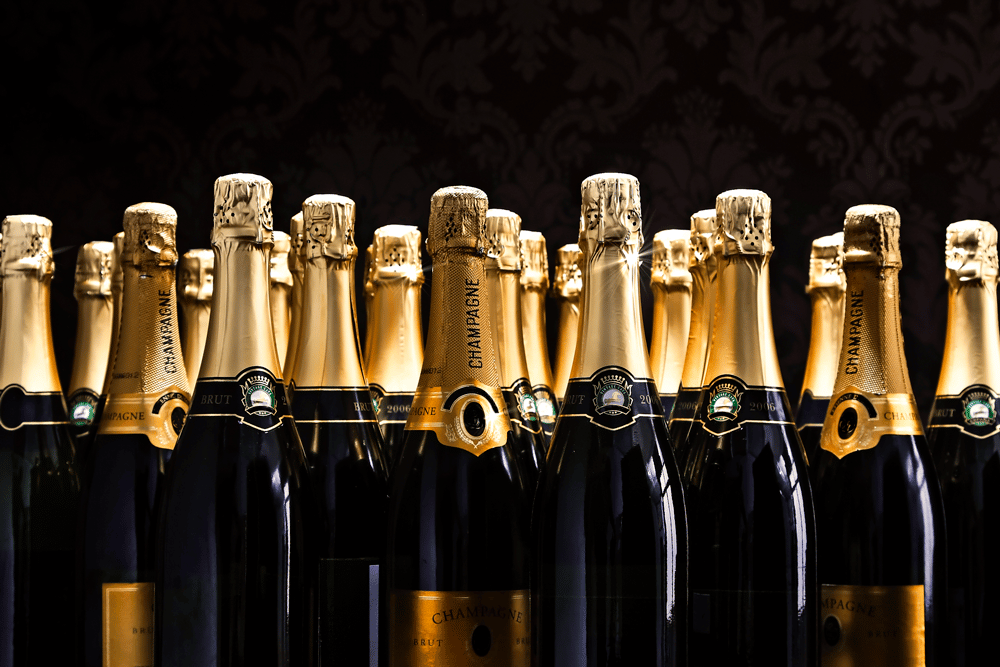
Non-Vintage
Often written as NV, non-vintage Champagne is made with grapes harvested in different years.
Vintage Champagne
These wines are made with grapes from a single growing season, and the year is on the bottle.
Blanc de Blancs
Meaning white of whites in French, this style is made solely with Chardonnay grapes. Blanc de blancs Champagne can offer great acidity and structure.
Blanc de Noirs
Meaning white of blacks in French, Blanc de noirs Champagne features dark-skinned grapes Pinot Noir and Pinot Meunier. While the grape skins are removed to not color the wine, the grapes still impart hints of red fruit and richness.
Rosé
This style of Champagne is a bit pink, though the intensity of color varies. Winemakers can make rosé Champagne in various ways, so some have a hint of red wine notes, while others are crisp and citrusy like a brut.
Brut
These wines are crisp and dry without any sweetness, though they may have hints of green apple, lemon, white peach, or toasted bread. Think of this as your everyday Champagne.
Dry
Dry Champagne is not as acidic as brut and has just a hint of sweetness.
Demi-Sec
This means “half-dry” in French, referring to Champagne with a noticeable sweetness.
Doux
This word means sweet in French, and these dessert wines have a balance of sugar and acidity that makes them refreshing and exciting.
Champagne food pairings
Russian and French royalty used to host lavish all-Champagne dinners because they knew Champagne paired with a range of foods. Its effervescence and acidity make Champagne a natural partner for any food that’s rich or fried; think caviar, lobster, fried chicken, or shrimp tempura.
A Blanc de Blancs is beautiful with delicate flavors in oysters, shrimp and pasta, while a richer Blanc de Noirs or Rosé can pair with pork, a lean steak, or a juicy hamburger. Dessert Champagnes are lovely with foie gras, blue cheese, spicy foods, and light fruit desserts—just make sure the wine is sweeter than the pastry.
How to open and serve Champagne
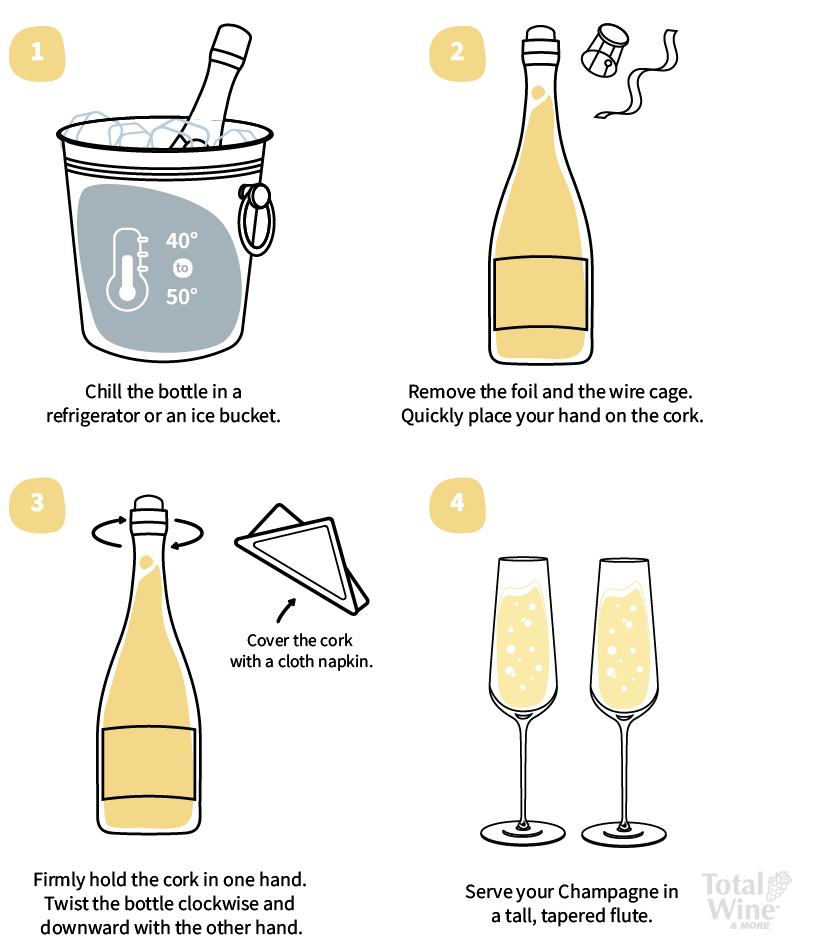
An erupting bottle of Champagne is fine for locker-room celebration, but at home, you’ll want to chill yours well before opening it. Opening a warm bottle of Champagne is dangerous since the cork can shoot out of the bottle with the same force as a bullet. Chill the bottle in a refrigerator or an ice bucket filled with ice and a little water for an hour until it’s 40 to 50 degrees Fahrenheit.
To open it, carefully remove the foil and the wire cage, then cover the cork with a cloth napkin. Be careful not to point it at anyone (including yourself). Firmly hold the cork in one hand while twisting the bottle clockwise and down with your other hand. If it’s properly chilled, the cork will exit the bottle with a soft gasp.
Serve your Champagne in a tall, tapered flute to show off the streams of bubbles. Some people like drinking sparkling wine from a Burgundy white wine glass to capture more of the bouquet.
